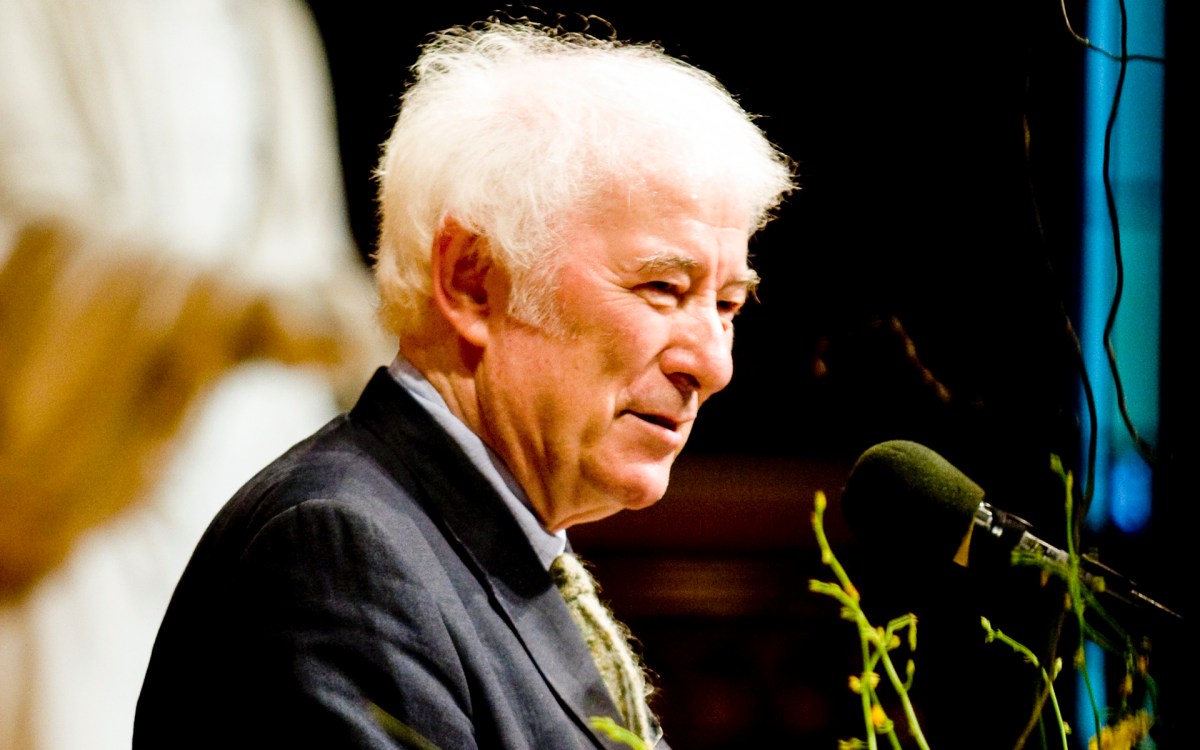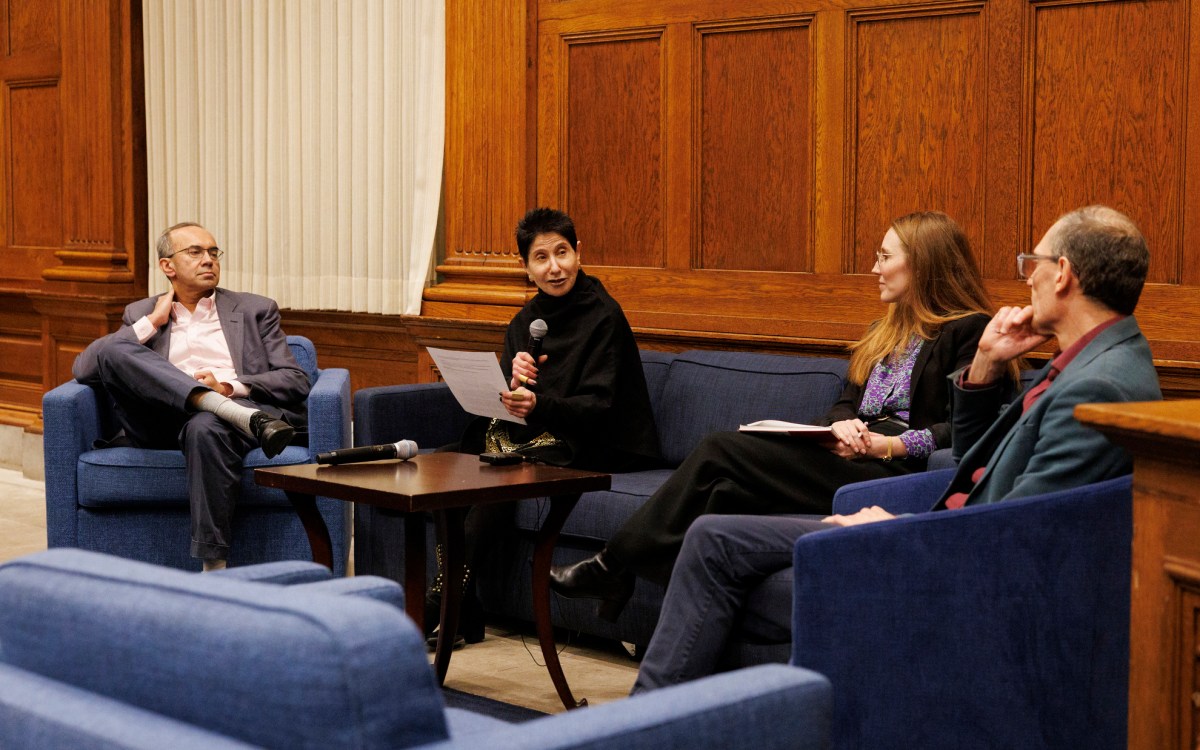‘A love letter to drawing’
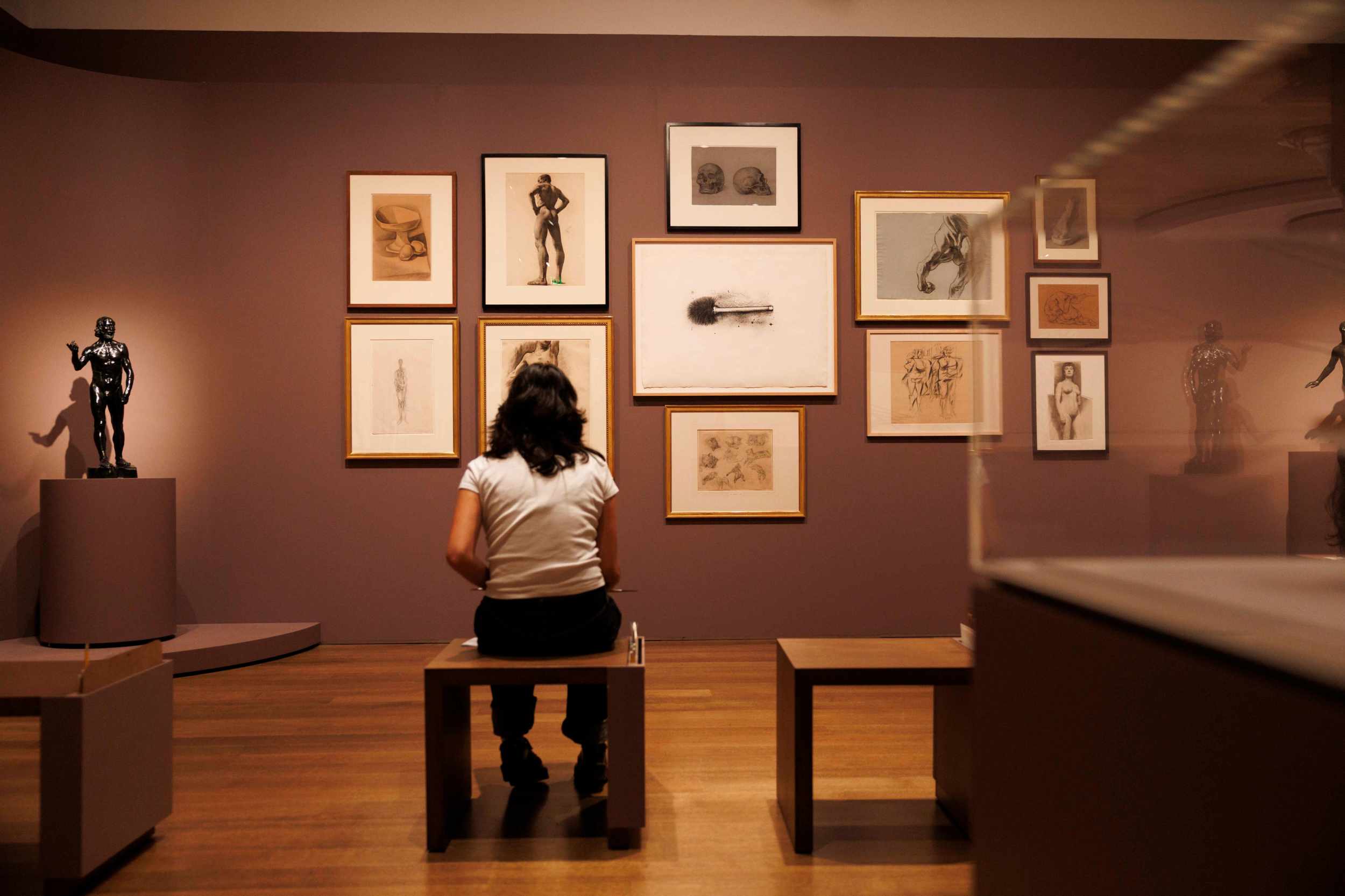
Photos by Niles Singer/Harvard Staff Photographer
Exhibit peels back layers to reveal raw expression in monochrome
At Harvard Art Museums, paintings by renowned artists such as Pablo Picasso, John Singer Sargent, Edgar Degas, Piet Mondrian, and Georges Seurat capture viewers’ attention with their rich colors and practiced brush strokes. A fall exhibition strips down the styles that made these artists, and others, famous to expose raw expression and experimentation in the most basic form of composition — drawing.
“Sketch, Shade, Smudge: Drawing from Gray to Black” showcases around 120 works spanning the 19th to 21st centuries all done in a combination of drawing mediums — chalk, charcoal, graphite, and crayon.
“It’s a love letter to drawing,” said Penley Knipe, the Philip and Lynn Straus Senior Conservator of Works of Art on Paper. “We have an amazing drawing collection here. It’s one of the best in the country, maybe in the world.”
The exhibition was curated by Knipe, as well as Division of European and American Art curator Miriam Stewart. The pair spent over a year carefully choosing works that would not only show off the museums’ collection of rarely seen works but also demonstrate the versatility of simple tools in the hands of artists.
“Some of our favorite drawings are up in this exhibition,” Knipe said during a recent tour of the gallery. She pointed to a large Degas charcoal drawing last brought out for exhibition in 2005.


“This drawing by Degas was in perilous condition and lived up in the conservation lab for decades because it’s on tracing paper, which is super thin, and it was then adhered to a thicker board,” Knipe noted. “It needed to come off because it was starting to fracture.”
All the materials in the exhibition, including the charcoal drawings, are fragile. As a conservator, Knipe played a key role in making sure the works on view were viable to be framed and hung. This process, she said, lent itself to better understanding the works — what makes them unique and what makes them alike. She noted charcoal’s ability to be “intensely rich and velvety, or delicately gray and suggestive” while graphite — the material in pencils — is “slippery, shiny, and easy to erase.” Crayon, Knipe said, “is deeply black and waxy, whereas chalk can be crumbly and diffuse.”
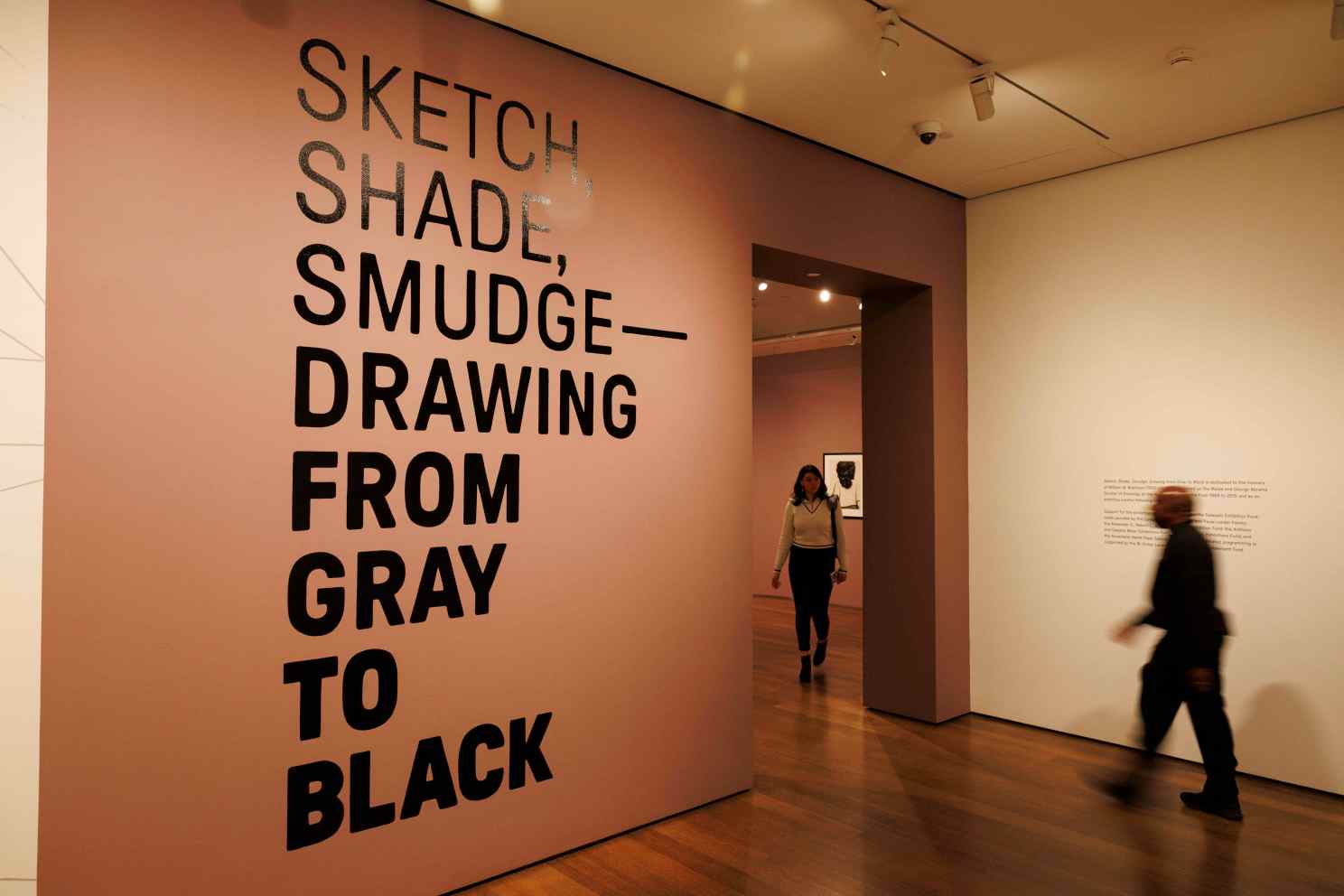
The exhibition.
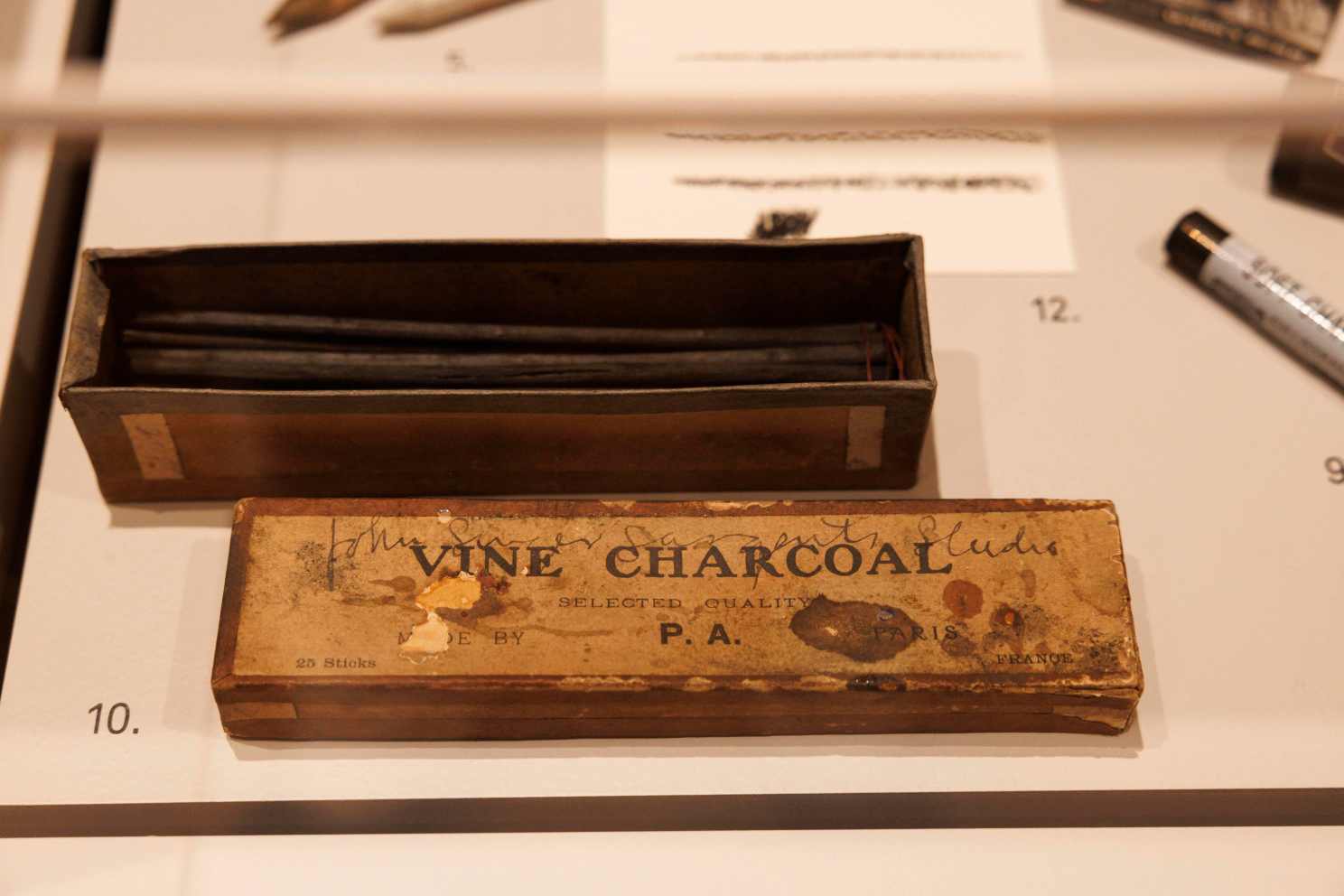
A “box of vine charcoal owned by John Singer Sargent” on display.
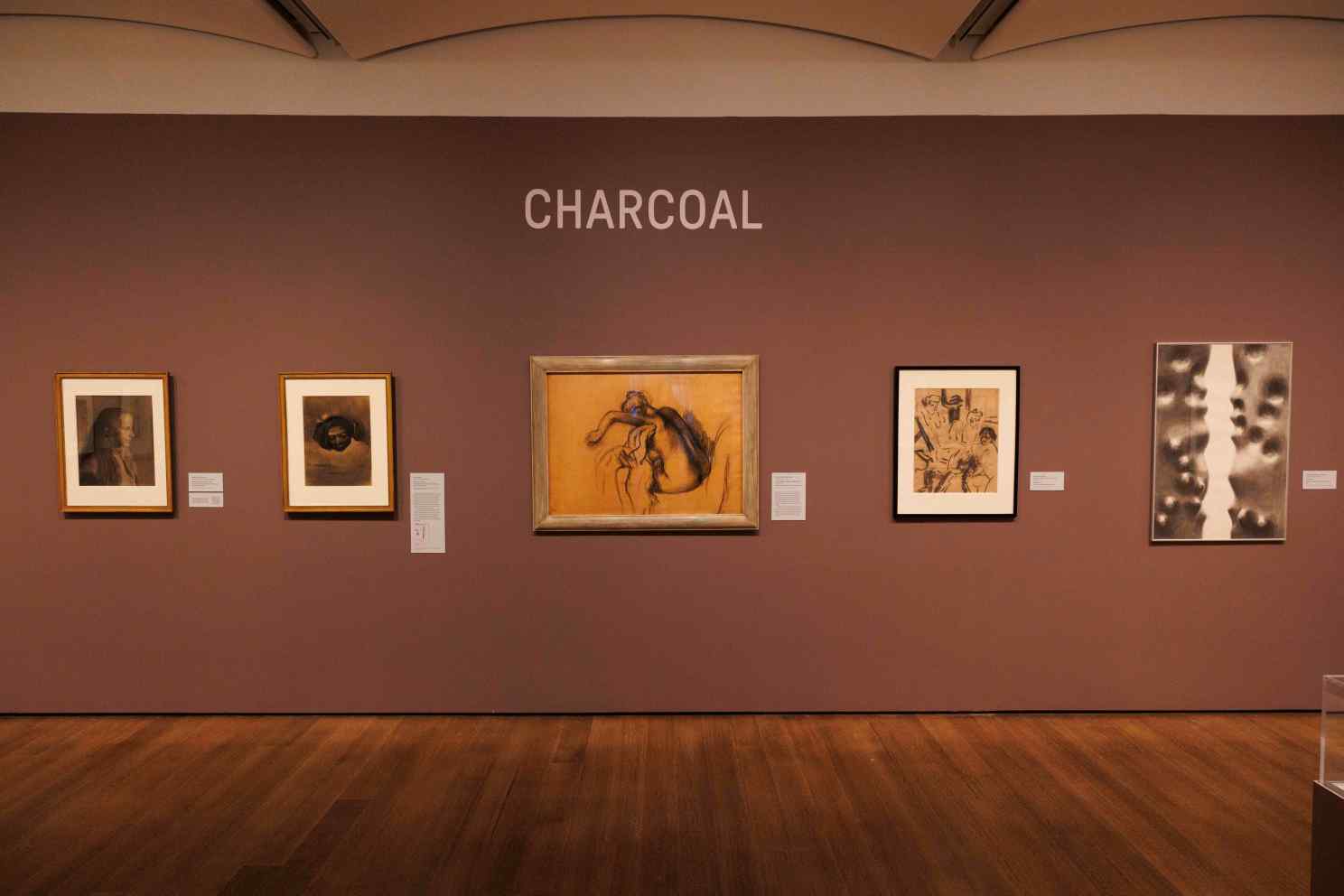
The “Charcoal” wall showcases five framed works of art.
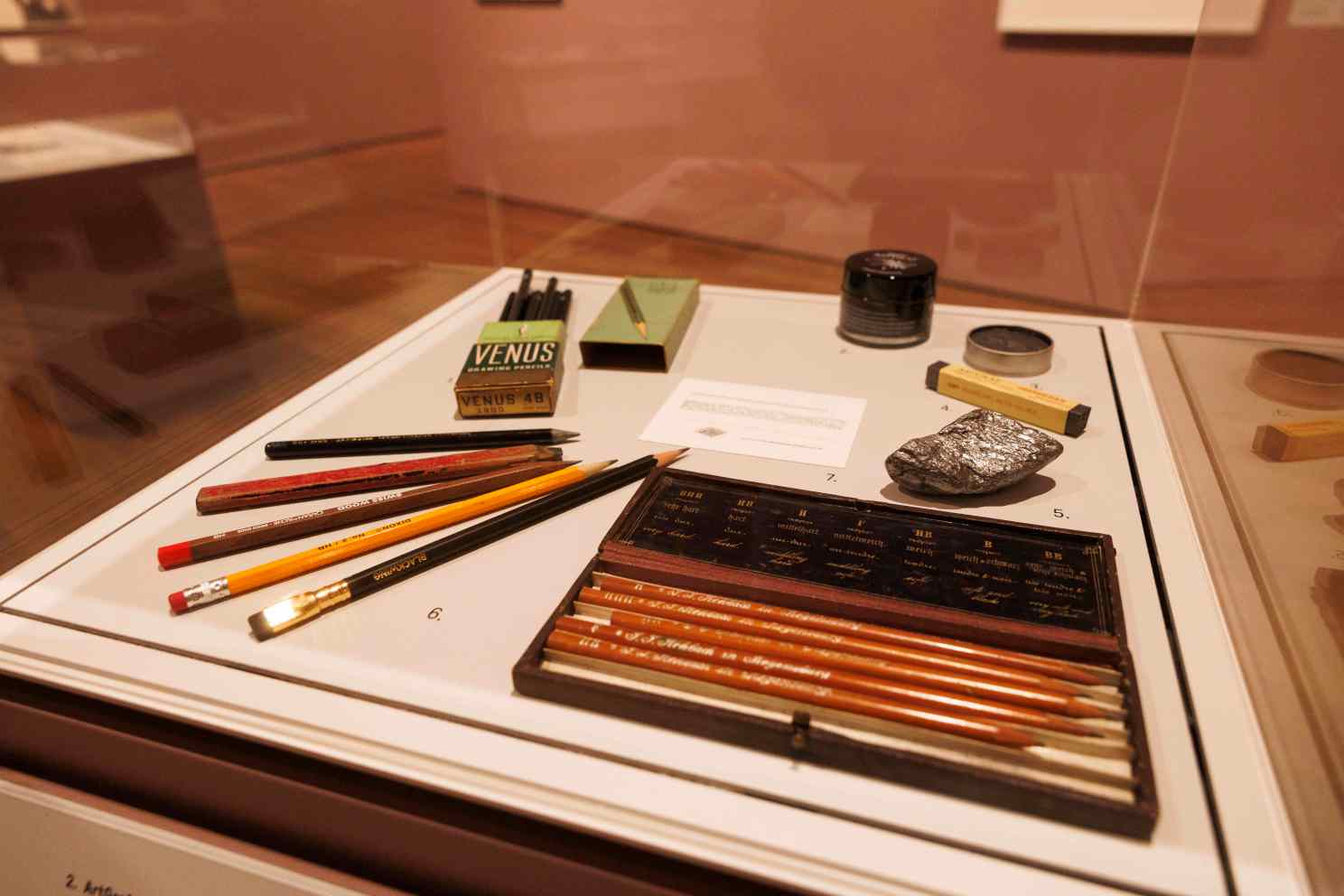
A display case of materials that features graphite from the collection.
In addition to exploring artists’ materials, “Sketch, Shade, Smudge,”as the name implies, also explores the manipulation of those materials and how artists use them, alter them, and play with them.
The exhibition shows how pressure applied to graphite can bring out its shimmery effect, and scraping away waxy layers of crayon can reveal stark highlights. Beyond the works hanging in the gallery, Knipe and Stewart also tried their hand at some of the altering techniques themselves — recording their attempts. Links to those videos can be found throughout the exhibition, and on the Harvard Art Museums’ Instagram account.
For erasing a lighter material like charcoal, graphite, or chalk, Knipe said they found that the historical way to do it — with bread — is actually most effective. “So you take a loaf of French bread, you go into the middle, and you kind of roll it into a stump shape.”
For those wanting to try their hand at some of the techniques seen in the latter half of the exhibition, staff have set up an area with stools, paper, and pencils.
“It’s set up as a 19th-century academic drawing academy where you would come and you would draw from the nude. You would draw from other arts. You would draw from sculpture. You would draw still lives — skulls and feet, plaster casts and things,” Knipe said. “And so one of the things that we hope is that people come, they see all of the drawings, and they realize, ‘I kind of want to try my hand at this.’”
She also noted that it’s best not to bring any bread into the gallery, and instead opt for the rubber erasers provided.
“Sketch, Shade, Smudge: Drawing from Gray to Black” is on display in the Special Exhibitions Gallery through Jan. 18. The Harvard Art Museums are free to all and open 10 a.m.-5 p.m. Tuesday through Sunday.
